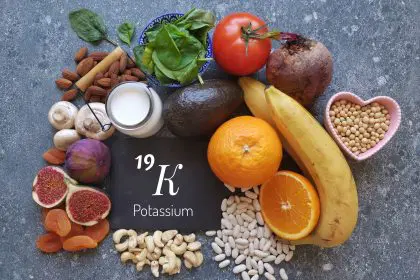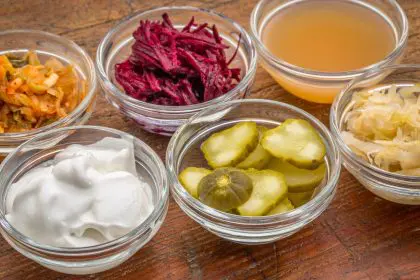Looking for a kitchen oil that balances taste with health benefits? The answer might already be in your pantry.
Sunflower oil gleams with golden promise in kitchens worldwide, but this common cooking companion carries both remarkable benefits and unexpected cautions. This versatile oil extracted from the seeds of the cheerful yellow flower has gained popularity for its neutral flavor profile and apparent health advantages. Yet beneath its sunny exterior lies a complex nutritional story worth understanding before your next grocery trip or cooking session.
The fascinating origin story of sunflower oil
Long before becoming a supermarket staple, sunflower oil has a rich heritage dating back thousands of years. Native Americans first cultivated sunflowers not just for their striking appearance but for their nutritional seeds. The journey from decorative garden plant to modern cooking essential unfolded gradually through centuries of agricultural innovation.
The oil itself comes from pressing the nutrient-rich seeds, yielding a light-colored liquid that ranges from pale yellow to deep amber depending on processing methods. Modern production techniques carefully extract the oil while preserving its beneficial compounds, particularly its impressive vitamin E content.
Today’s sunflower oil market offers several distinct varieties, each with unique properties that make them suitable for different culinary applications. Understanding these differences helps informed consumers make better choices based on their specific cooking needs and health goals.
The 4 types of sunflower oil you should know about
Not all sunflower oils are created equal. The market offers distinct varieties that differ significantly in their fatty acid composition, which directly impacts their cooking performance and health effects:
- High-linoleic sunflower oil contains between 44-75% linoleic acid, an essential omega-6 fatty acid. This traditional variety offers vitamin E but becomes less stable at high temperatures.
- High-oleic sunflower oil boasts 75-90% oleic acid, a monounsaturated fat similar to olive oil. This variety stands out for its exceptional heat stability and longer shelf life.
- Mid-oleic sunflower oil strikes a balance between the previous types, offering moderate stability with a mild flavor profile that many commercial kitchens prefer.
- Organic or cold-pressed sunflower oil undergoes minimal processing to preserve natural nutrients but typically has a shorter shelf life and lower smoke point than refined versions.
Food manufacturers often prefer high-oleic varieties for packaged foods since they resist oxidation better, extending product shelf life without hydrogenation. For home cooks, the choice depends largely on intended cooking methods—with high-oleic varieties shining in high-heat applications.
The heart-healthy promise that nutritionists acknowledge
The cardiovascular benefits of sunflower oil stem primarily from its favorable fatty acid profile when compared to saturated alternatives. Research consistently shows that replacing saturated fats like butter with unsaturated options like sunflower oil can positively influence cholesterol levels.
The American Heart Association recognizes that high-oleic sunflower oil specifically can contribute to improved heart health markers when incorporated into a balanced diet. This recognition comes from studies demonstrating its ability to maintain or reduce LDL (low-density lipoprotein) levels while potentially increasing HDL (high-density lipoprotein)—the “good” cholesterol.
Sunflower oil also contains zero trans fats when unhydrogenated, making it align with current dietary recommendations that emphasize reducing trans fat intake for cardiovascular health. This natural absence of trans fats represents a significant advantage over partially hydrogenated oils that dominated food production in previous decades.
The beauty secret hiding in your cooking cabinet
Beyond its culinary applications, sunflower oil offers remarkable benefits for skin and hair through both dietary consumption and topical application. Its substantial vitamin E content—approximately 5.6 mg per tablespoon—provides antioxidant protection against environmental damage to skin cells.
This natural vitamin E, combined with the oil’s essential fatty acids, supports skin barrier function and moisture retention. The lightweight molecular structure allows it to penetrate skin without clogging pores, making it suitable for various skin types including sensitive complexions.
For hair care, sunflower oil helps seal moisture into strands while adding protective properties against heat styling damage. The linoleic acid content nourishes hair follicles when consumed regularly, potentially supporting healthier growth patterns and reduced shedding over time.
The omega imbalance that worries health experts
Despite its positive attributes, sunflower oil—particularly the high-linoleic variety—contains elevated levels of omega-6 fatty acids without corresponding omega-3s. While both are essential nutrients, the typical Western diet already skews heavily toward omega-6 consumption.
Research suggests that an imbalanced ratio between these fatty acid families may contribute to chronic low-grade inflammation in the body. This subtle inflammatory state has been associated with increased risk for several health conditions including cardiovascular disease, certain cancers, and autoimmune disorders.
Nutrition researchers recommend aiming for an omega-6 to omega-3 ratio closer to 4:1, whereas the average American diet currently exceeds 15:1. Regular consumption of high-linoleic sunflower oil without complementary omega-3 sources potentially widens this imbalance further.
The heating hazard most cooks overlook
While sunflower oil’s relatively high smoke point makes it appealing for frying and sautéing, heating any oil beyond its stable temperature leads to chemical changes worth considering. When oil reaches its smoke point—approximately 440°F (227°C) for refined sunflower oil—it begins breaking down and releasing potentially harmful compounds.
Repeated heating, particularly with high-linoleic varieties, accelerates oxidation and formation of aldehydes and other byproducts associated with cellular damage. Each reheating cycle diminishes the oil’s nutritional value while increasing these concerning compounds.
High-oleic sunflower oil provides greater protection against oxidative damage during cooking due to its different fatty acid composition. This variety withstands heat better, making it preferable for high-temperature cooking methods like stir-frying or deep frying when sunflower oil is the chosen medium.
The smart way to include sunflower oil in your diet
Incorporating sunflower oil wisely means understanding both its strengths and limitations. For everyday healthy usage, consider these practical approaches:
Reserve high-oleic varieties for cooking that requires moderate to high heat, while using cold-pressed versions for dressings and no-heat applications where their delicate flavors shine.
Store sunflower oil properly in dark glass containers away from direct light and heat sources to prevent premature oxidation and preserve its nutritional integrity.
Complement sunflower oil consumption with omega-3 rich foods like flaxseeds, walnuts, and fatty fish to maintain a healthier fatty acid balance in your overall diet.
Rotate different cooking oils including olive, avocado, and coconut to ensure dietary diversity and a broader range of beneficial compounds in your nutrition profile.
Use sunflower oil within its recommended shelf life—typically 6-12 months after opening—and discard any oil that develops a rancid smell or taste, indicating harmful oxidation has occurred.
The golden rule with sunflower oil mirrors good advice for most dietary components: moderation and contextual awareness matter most. As part of a varied diet rich in whole foods, sunflower oil—particularly high-oleic varieties—offers valuable nutritional contributions without significant concerns.
Understanding this common kitchen ingredient empowers consumers to make informed choices that balance convenience, taste preferences, and health considerations. The next time you reach for that bottle of sunflower oil, you’ll know exactly what you’re adding to your meal and how it fits into your broader nutritional landscape.















